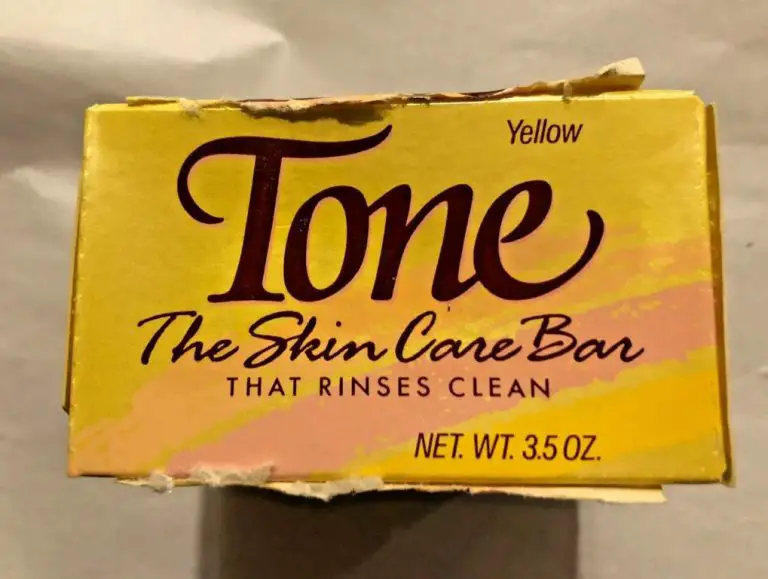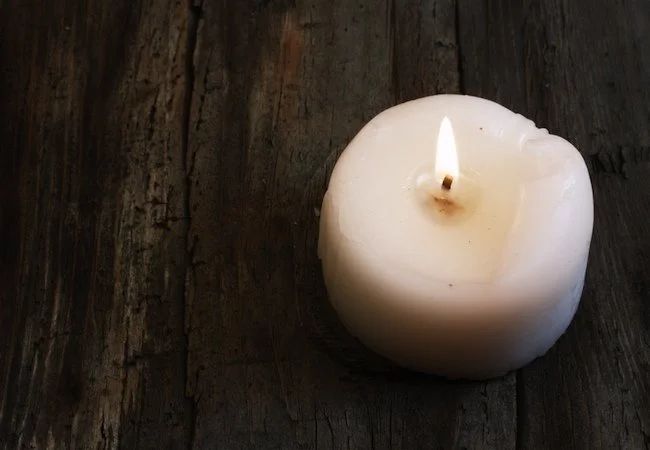Can You Fix A Broken Candle Wick?
Broken candle wicks are a common issue that many candle users face. The wick is the small piece of string at the center of the candle that acts as the ignition source when lit. As the wick burns, it melts the wax around it to release fragrance and provide light. However, wicks can become brittle and break over time, especially if the candle burns for long periods. Once the wick breaks, it becomes very difficult or impossible to light the candle again. This often leaves people with unused wax they can’t burn because of a broken wick.
Fixing a broken candle wick is possible in many cases and allows you to revive candles and use all the wax. There are several methods for repairing candle wicks at home without any special tools. This guide will provide an overview of why wicks break, the dangers of burning a candle with a broken wick, and step-by-step instructions on how to safely trim, replace, or repair the wick to restore the candle’s function.
What Causes Candle Wicks to Break?
There are a few common causes of candle wicks breaking:
Improper wick trimming – If the wick is trimmed too short or uneven, it can lead to the wick breaking apart and being unable to draw up wax properly. Wicks should be trimmed to 1⁄4 inch before lighting to avoid this issue.
Low quality wicks – Cheaper candle wicks are often made from lower quality materials like paper or cotton that are prone to breaking down compared to quality wicks made from braided cotton. Using poor quality wicks increases the chance of wick failure.
Wax pooling – If the melted wax pool reaches the wick tab and submerges it, the wick can become saturated with wax which weighs it down causing the wick to bend and break. This usually happens if the candle isn’t burning evenly.
Improper wick size – Using a wick that is too small or too large for the diameter of the candle can increase risk of the wick breaking. The wick size should be suited for the candle size.
Burning too long – Burning a candle for more than 4 hours in a single use can weaken and break down the wick. It’s best to extinguish a candle before the wax pool reaches the edges.
Mishandling – If candles are knocked over or handled roughly, the wick can become bent or broken. Candles should be handled gently to avoid wick issues.
Dangers of Burning a Candle with a Broken Wick
Burning a candle with a broken or damaged wick can be hazardous. One of the main dangers is uneven burning and tunneling. When the wick breaks, the flame is unable to burn evenly across the top of the candle. This causes the wax to melt unevenly, creating deep ridges and valleys in the candle’s surface. Tunneling occurs when a large hole forms in the center of the candle as the flame burns down into the wax. Tunneling is dangerous because it makes the candle unstable and prone to tipping over.
Another major risk posed by a candle with a broken wick is an increased fire hazard. When the wick is broken, the flame becomes erratic and uncontrolled. The wick may spark and flare unpredictably, which can ignite nearby objects. The broken wick can also fall into the melted wax pool and cause flare ups. Research studies demonstrate that uneven burning and long, unsupported wick lead to increased soot and smoke production (source). Prolonged exposure to candle emissions like this can have negative health and safety implications.
In summary, a broken wick prevents proper burning and poses serious fire risks. It’s best to avoid burning a candle once the wick has become damaged. The uncontrolled flame and potential for tunneling and flare ups presents hazards that far outweigh any benefits of trying to salvage the candle.
Can You Relight a Candle with a Broken Wick?
Relighting a candle with a broken wick can be difficult and often leads to more problems. According to Martha Stewart (https://www.marthastewart.com/8107349/how-fix-candle-broken-wick), a broken or missing wick prevents the melted wax from being drawn up properly through the wick. This makes it harder for the wick to relight after being blown out.
Trying to relight a candle with a broken wick can also cause the flame to get too close to the wax, creating excess smoke and more likelihood of the candle tunneling. Tunneling is when a deeper hole or tunnel forms in the wax around the wick due to uneven burning.
Instead of relighting a candle with a broken wick, it’s better to try fixing the wick first before relighting. This involves trimming or replacing the wick so it can function properly again. If the wick can’t be repaired, it’s safer to discard the candle.
Trimming the Wick
If the remaining wick is still long enough, trimming it may help the candle burn properly again. Use sharp scissors or nail clippers to carefully trim the wick so it is no more than 1⁄4 inch tall above the melted wax.
Trimming the wick helps remove any charred or uneven portions so it can burn cleanly and evenly. Be very careful not to cut the wick too short, as this could prevent the flame from reaching the wax pool. The ideal wick height after trimming is just a small nub sticking out from the melted wax surface.
It’s also important to trim the wick straight across, not at an angle, so it burns properly. Avoid leaving any frayed edges or unwound threads at the wick tip. For best results, trim just before lighting so the wick is freshly cut.
Regular wick trimming every few hours as the candle burns helps sustain an even flame and prevent future wick issues. Always extinguish the candle fully and allow the wax to harden before attempting to trim the wick.
With a careful trim of any charred portions, many candles with a broken wick can burn normally again. But take care not to trim too short or cut across the wick unevenly.
Replacing the Wick

If the wick is broken too short or fallen out completely, you’ll need to replace it with a new wick. This involves removing the old wick stub and inserting a new wick into the candle.
To replace the wick:
- Use a wick corer tool to dig out the old wick. Push the corer straight down into the wax towards the bottom of the container, twisting gently to cut through the wax. Remove the corer with the wick stub inside.
- Trim a new wick to be slightly longer than the depth of the candle wax. Cotton or wood wicks typically work best.
- Insert the new wick carefully into the hole left by the wick corer. Push it all the way to the bottom.
- Let the candle sit for a few hours so the wax resets around the new wick.
- Trim the wick to 1⁄4 inch before lighting. This will help prevent excess smoking and uneven burning.
Replacing the wick can revive candles with broken or missing wicks. Be sure to trim the new wick properly so it burns even and safe. Refer to our guide on how to fix a candle wick for more tips.
Using Wick Stickers or Centering Discs
One easy solution for fixing a broken candle wick is to use a wick sticker or centering disc. These are small adhesive discs made of heat-resistant material that attach to the bottom of the wick.
Wick stickers help center and anchor the wick by providing a wider base. The adhesive securely sticks to the bottom of the metal wick tab or paper wick, while the flat disc adheres to the bottom of the candle jar. This prevents the wick from tilting or falling over when the candle is lit.
Many wick stickers are double sided, with adhesive on both sides of the disc. This creates a strong bond between the wick and the candle vessel. The discs are durable enough to withstand high temperatures from candle flames. Heat-resistant foam and adhesives are commonly used.
Wick stickers come in various sizes, such as 1/2 inch, 3/4 inch or 1 inch diameters. They are sold in packs for convenient use over multiple candles. Simply attach a sticker to the broken wick and it will stand upright when relit. The wick is firmly anchored in place to continue burning safely.
Trying a Middle Burn
A middle burn is a technique that can help fix a broken wick by melting the wax pool before relighting the candle. This allows the wick to stand upright again so it can burn properly. According to Prosperity Candle (https://www.prosperitycandle.com/blogs/news/how-to-fix-candle-tunneling), the steps for a middle burn are:
- Extinguish the candle flame if it’s still lit.
- Use a hair dryer to melt the entire top layer of wax, moving it around to melt the wax evenly across the surface.
- Let the wax cool and harden again.
- Once hardened, trim the wick if needed so it is centered and standing straight up.
- Relight the candle. The melted and rehardened wax should help hold the wick upright as it burns.
The key is to create an even, flat wax pool before relighting. This gives the wick a stable base to stand straight up. Melting the wax also helps redistribute it so any tunnels from poor burning can fill in. Done properly, a middle burn can help revive a candle with a broken wick.
When to Toss a Candle with a Broken Wick
If you’ve tried the methods above and still can’t get your candle to burn properly, it may be time to let it go. There are a few signs that indicate it’s not worth continuing to try to save a candle with a broken wick:
- The wick is too short and keeps breaking off when you try to trim or replace it. According to Martha Stewart, wicks that are less than 1/4 inch won’t be able to draw up enough wax.
- The wax pool has become very deep or uneven from repeated lighting attempts. This can lead to issues like tunneling.
- The wax has started to discolor or develop an unpleasant smell from overheating or repeated lighting attempts.
- You’ve tried wick stickers/centering discs and a middle burn but the candle still won’t burn right. As suggested on Reddit, at a certain point it’s just not worth the effort.
If your candle has developed any of these issues, it may be a sign to discard it and try a new one. Safety should be your top priority, as a candle that doesn’t burn properly can be a fire hazard.
Preventing Broken Wicks
Proper wick maintenance is key to preventing broken wicks. Trimming the wick to 1⁄4 inch before lighting will help the candle burn evenly and reduce issues like tunneling that can lead to wick damage.
Using high quality wicks made from materials like cotton, paper, or wood also reduces the chances of breakage. Quality wicks have braiding or special coatings that help them resist splitting or peeling as the flame burns. According to Harlem Candle Company, 100% cotton wicks are less likely to bend and break compared to lower quality wicks.1
Allowing the candle to burn all the way through the wax pool before extinguishing also helps prevent issues like drowned or buried wicks. Molly Maid recommends burning a candle for at least 4 hours to form an even wax pool. This will use more of the wax and wick evenly.2 With proper maintenance and high quality materials, you can help minimize the chances of dealing with a broken wick.





